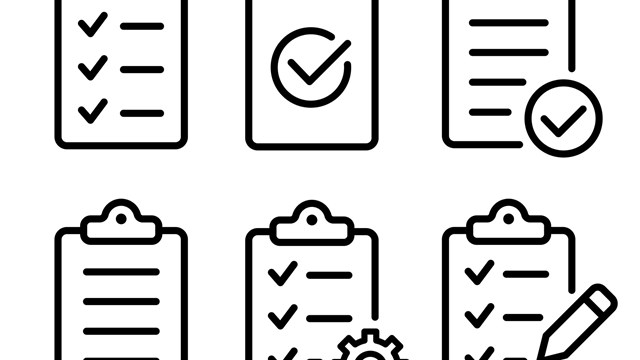
As community members, co-op and condo owners work together to maintain the greater structure in which they live – not just their individual units. Major systems – things like boilers, roofs, and façades – are expensive to maintain and repair, but each has a standard useful life. Thus, boards and managers should be diligent to keep track not only of the condition of those systems, but of the capital funds available to repair or replace them, if need be. Co-ops and condos should also have a second type of reserve fund for unexpected operating expenses. This reserve is usually smaller than the main capital fund, and is in place to protect the corporation’s or association’s ability to pay bills or meet at least initial payments on emergency situations.
There isn’t any legal requirement for a minimum reserve fund amount per unit per se. However, most attorneys, accountants, and lenders who make loans to co-ops and condos recommend that corporations and associations follow Federal National Mortgage Association (FNMA, also known as Fannie Mae) guidelines, which require a 10 percent reserve as a line item in their annual budget.
Useful Life
In the context of co-op and condo properties, the concept of ‘useful life’ can be applied to pretty much any and all individual building systems, like elevators, plumbing lines, façades, and boilers. Remaining useful life can be determined for each individual system as well. Simply put, if a boiler has a typical useful life of 50 years, and your building’s boiler is 30 years old, one might assume that the boiler has a remaining useful life of about 20 years.
That’s in a perfect world, of course. In the real world, that boiler – if well cared for – may last more than 50 years. Alternatively, if the boiler has not been well maintained, or has some defect or atypical physical problem, it may have already reached its useful life at 30, and be one cold snap away from going on the fritz.
All that said, the end of useful life does not necessarily mean that a particular system needs to be torn out and completely replaced. Instead, when systems near the end of their estimated useful life, they can often be rebuilt, repaired or renewed. Upgrading or refurbishing an elevator – while by no means cheap – is far less expensive than replacing it with a brand-new one.
Reserve Studies
“The best way to determine what reserves a condominium association requires is to have a reserve study done,” says Mark Faro, an attorney with Piekarsky & Associates in Wyckoff, New Jersey. A reserve study, generally completed by a licensed engineer or architect, surveys the buildings system, estimates their remaining useful life and outlines what major repairs for each system might be.
Jayson Prisand, a partner at the Plainview, New York-based accounting firm Prisand, Mellina, Unterlack & Co., describes the way reserves are determined: “Sometimes it’s almost like you have to look backwards to figure out how much money you will need. It’s planning. Short-term planning is where we generally consider one year’s operating budget to estimate maintenance or common charges. Then there’s a capital budget relative to what kind of long-term improvements have to be made to the property. Generally, we suggest a five-year plan for capital budgeting, and that the co-op or condo engage an engineer or other consultant to do a reserve study.”
How Much Money Should Be in Your Reserve Fund?
“It’s very important to have adequate reserves,” says Daniel J. Wollman, CEO of Gumley Haft, a co-op and condo management firm in New York City. “Typically, accountants tell boards they should have three months’ operating expenses on hand in reserve. That’s the industry standard. Buildings have to analyze the infrastructure of their properties, especially if the property is older. A boiler might cost a $500,000 to replace. That may or may not be three months of common charges.”
The hard truth is, as Wollman says, “Stuff costs a fortune.” He explains that a lot of buildings work on a pay-as-you-go system. In other words, “If we need to do a bunch of work, tell us – and we will either assess, or take on debt. Many residents and boards don’t see the value of a building having a $1,000,000 reserve fund. As managers, we don’t think that adds enough value to the building. Many brokers would disagree with us, as large reserve funds are a selling point...We believe residents would rather hold their own money than have the co-op hold it.”
According to Faro: “It’s not a one-size-fits-all situation. If a proper reserve fund study has been done, and reserves have been properly funded over time, there should be no need for an assessment or for financing. Special assessments should be saved for unforeseen circumstances.” As an example, he goes on to explain that many associations in New Jersey institute a ‘snow assessment,’ when the budgeted item for snow removal has been exhausted before winter is over. Many snow removal contracts contain a clause that provides for snow removal up to a certain number of aggregate inches. Often, a particularly snowy winter may require more service than the snow removal contract provides – and the association will have to charge a small assessment to cover the cost of additional snow removal that year. Faro stresses that if at all possible, assessments should be used for shortfalls on operating items, not on capital expenditures.
Financing Reserves
With respect to operating reserves, Harley Seligman, Senior Vice President with National Cooperative Bank, a lending institution dedicated to financing cooperative buildings, says: “We have built into our loan documents that co-ops and condos must maintain a minimum of 10 percent of their annual maintenance [in reserve]. That’s the basic minimum we think is necessary for a healthy building. For capital projects, we recommend that every five years or so a co-op or condo do a reserve study to determine what potential work may need to be done in the ensuing five years, and plan for that accordingly by setting up a secondary reserve if necessary. We also suggest that both co-ops and condos increase maintenance or common charges every year by a least a few dollars, so that when there is an emergency, they have a financial cushion.”
As to whether to pay for potential work by financing it or assessing the owners, Wollman says: “It depends on the clientele in the building. The economics of an assessment may be too expensive for the residents. In an environment where money is cheap, it may pay to go with financing. The increase in costs to the owners will show up in their maintenance, and will be only a few dollars a month per each apartment – so no real pain.” Conversely with an assessment, they might be forced to come up with a large sum immediately, or relatively large sums monthly for some period of time. Not everyone can afford that.
The Difference Between Condos and Co-ops
The main difference for condominium owners when it comes to reserves and major capital improvements is that their financing options are more limited. In a co-op, the owners own shares in the corporation that owns the building. The building is intact as collateral, so as a corporation, they can borrow money against the property. But in a condominium, each unit is owned as individual real estate. No mortgage can be put on the entire property. Financing for capital improvements, as opposed to large upfront assessments, is available.
Seligman explains that National Cooperative Bank has a special program for condominium buildings. The loan is treated as an unsecured loan. Liens are put against the condominium’s cash accounts, such as its operating accounts and any reserve accounts they may have. The loan is made for 10 or 15 years, and is self-amortizing. The monthly cost of the financing is built directly into the condominium’s common charges. It’s cash-based lending and, like the options for co-ops, can take away some of the sting of a large one-time assessment.
Capital reserves are an important and prudent component of community financial management. Even in a new or well-built and well-maintained building, something inevitably will go wrong and need repair. “When you know what you need, over what period of time, then you determine how to raise the money, assessment or debt,” Prisand says. Or a combination of both.
AJ Sidransky is a staff writer/reporter with The New Jersey Cooperator, and a published novelist.






Leave a Comment